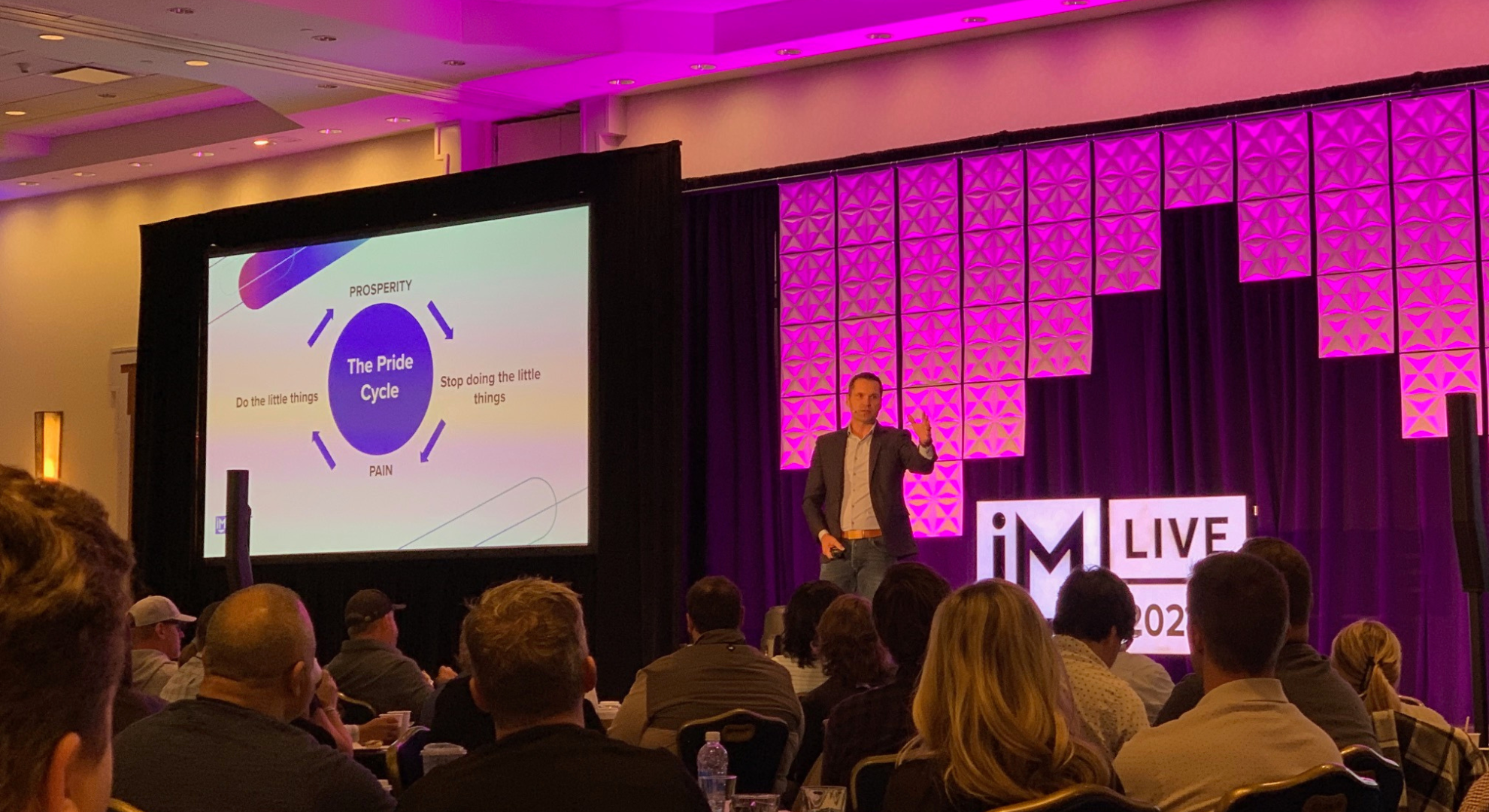From Trust Out Of Necessity To Distrust By Default: How Trust Evolved Over The Last 50 Years
According to the 2024 Edelman Trust Barometer Global Report, 47% of the respondents in the U.S. and 52% in the U.K. don’t trust businesses in general. In addition, 61% of people believe that business leaders are purposely trying to mislead them by exaggerating or saying things they know are false. But maybe more worrying is that all three worsened by 2% in the last 12 months!
Buyers are skeptical of or right-out distrusting businesses by default. This is a staggering change from only a few decades ago when salespeople were seen as trustworthy experts with exclusive knowledge. How did we get here?
Over the past five decades, marketing and sales have undergone a complete transformation. These changes were primarily driven by technological advancements, which gave the buyer unprecedented and almost unlimited access to information, resulting in a change in consumer demands, expectations, and behavior as the power balance shifted from a seller’s market to a buyer’s market. This inadvertently created to a default sense of distrust among buyers today.
1970s and 1980s: Buyers Trusted By Necessity As Brands Controlled The Narratives
In the 1970s and 1980s, there was no internet, so social media platforms or customer review sites. If you were in the market for a new car, TV, or another considered purchase, you read a Consumer Reports Buyers Guide, went to multiple stores or dealerships, and asked your friends and family. Brands controlled the narrative and sales people were the gatekeepers of exclusive knowledge about products and services.
All in all, you had very limited ways to access product information. Instead, you had to rely heavily on what advertising and sales people told you. And since you couldn’t verify any of the claims, you had to pretty much take them at face value. You gathered all the information you could, but ultimately, you had to trust based on feelings.
It’s no accident that was pre-dominately brand-centric messaging aimed at building strong emotional connections. Think Coca-Cola's iconic "I'd Like to Teach the World to Sing" or the Malboro Man. They were so successful because the aligned their messaging with the ethical and social values of the target audience. Others invested heavily into memorable slogan and jingles (like Wendy's "Where's the Beef?") that became cultural touchstones, embedding brands deeply into the social fabric. This created a familiarity through repetition.
1990s and 2000s: The “Digital Consumer Revolution” Begins
This all changed in the 1990s and 2000s. The internet democratized access to data, empowering buyers to independently research companies and products, compare options, competitors, and prices, and make decisions without having to depend on salespeople or advertisements alone. This shifted the power from seller to buyer, starting the "Digital Consumer Revolution," as my friend Marcus Sheridan calls it.
Buyers started to demand transparency and honest, clear, and accessible information online. As early versions of companies’ websites emerged, buyers started to judge businesses based on their website’s professionalism and content. Soon, after platforms such as eBay, Amazon, and Yelp introduced feedback and rating systems, buyers looked for those as signposts of confidence and relied on them more than the company's claims. Reviews, ratings, and testimonials instantly became a central component of trust-building. In addition to content marketing, companies used emotional resonance, authenticity, and relatability (e.g., Dove’s “Real Beauty” and Old Spice’s “The Man Your Man Could Smell Like” campaign) to connect with audiences and establish trust.
A transparency divide quickly developed between companies like Amazon which embraced transperency with its detailed product pages containing detailed product information, user reviews, comparisons, and much more and companies that continued traditional marketing and sales tactics.. However, as buyers became more informed, they questioned those outdated tactics. It is astonishing that even to this day, 30-something years later, websites still won’t talk about their pricing. You know how much it costs. Your buyer knows that you know. So, if you aren’t sharing this information with your buyers, you must have something to hide. And the second your buyer feels that trust is gone.
2010s: The Inbound Marketing Revolution
In the 2010s, trust building focused on embracing authenticity (e.g., Apple’s “Shot on iPhone” campaign featured real customer photos), education, and community engagement.
Inbound Marketing, a term coined in 2005 by Hubspot Co-Founders Brian Halligan and Dharmesh Shah, became one of the most popular marketing strategies. The idea was as simple as it was effective: create educational blog articles and other freely accessible content to attract visitors to your website. Then, offer irresistible premium content to convert those visitors into leads you could nurture until they are ready to buy. Then, they are handed over to sales, who ideally would follow a later developed inbound sales methodology. This worked so well that everyone and their grandmother soon started doing inbound marketing.
But soon, educating and providing value to the customer to build trust was forgotten and replaced by the chase for the #1 ranking on Google. Search Engine Optimization (SEO) became the new mantra. By the end of the 2010s, the sheer volume of online information was overwhelming. Brands published weekly and sometimes even daily blog articles to rank high in search engines to be found by buyers. This resulted in articles optimized for search engines, not humans. They were often generic, didn’t add any value, and most of the time ended in a sales pitch. Consumers became wary of marketing content, suspecting underlying sales motives.
Now, consumers have the opposite problem they had 20 years earlier: the content overload that ensued makes it difficult for buyers to recognize credible sources, leading to confusion and distrust. These feelings are often compounded as the prospect gets handed over from marketing to sales. Despite all the changes, many sales organizations cling to aggressive, seller-focused approaches, which clash with the now more informed and highly skeptical buyers.
However, those organizations that took an advisory inbound sales approach, collaborating with marketing to deliver value through content, and closely aligned their marketing and sales teams saw considerable increases in leads, deals, and revenue.
2020s: Trust at an All-Time Low Amidst Uncertainty
Humankind has probably seen more change in the first four years of the 2020s than in the last four decades: We faced a COVID-19 pandemic, global supply chain disruptions, economic uncertainty, political instability, multiple wars, and ethical division. As if that wasn’t enough, we face extraordinary technological advancements in Artificial Intelligence that have been called more impactful than fire and electricity. So, it isn’t an exaggeration to say that building trust has never been more important!
Where does this leave us in terms of marketing and sales today?
On the one hand, modern campaigns emphasize transparency to build credibility. Companies use Artificial Intelligence (AI) and machine learning to transform their marketing and sales through predictive analytics, Large Language Model (LLM)-based chatbots and Voice Agents, and hyper-personalized experiences.
A great example of hyper-personalization is Spotify’s “Wrapped” campaign, which uses transparent personalization to create engaging experiences. However, consumers are questioning the authenticity of hyper-personalization efforts because it is starting to smell like manipulation.
Other concerns are deepfakes and AI-generated content. It is becoming harder and harder to tell what is real and what isn’t. As cyber security threats and data breaches increase, consumers are getting increasingly concerned about what happens with their personal and behavioral data, and they demand more transparency and ethical data practices. The best example of this is the current drama around 23andMe. According to 23andMe's privacy policy, if the company is involved in a "bankruptcy, merger, acquisition, reorganization or sale of assets, your Personal Information may be accessed, sold or transferred as part of that transaction.”
Many brands focus on empathy and ethical behavior to align with consumer priorities and values to build trust again (as they have in the 70s)—for example, companies like Patagonia stress environmental and social responsibility to earn consumer trust. On the contrary, at the end of 2024, Jaguar sent shockwaves through the internet with its recent “create exuberant” rebranding campaign featuring multiracial, gender-bending models who were doing everything else but driving a luxury car. Did they stray too far from their target audience? Or did they hit the reset button to redefine themselves? Only time will tell.
AI not only impacted marketing, but also sales. Salespeople are also leveraging AI to create more tailored interactions. The best salespeople have understood that aggressive sales tactics don’t work. Instead, they work hard to establish themselves as an authoritative, trusted advisor that can guide a buyer to the right choice that meets their needs, regardless of whether that is with us or another company.
Key Takeaways:
- The power of balance has shifted from the seller to the buyer as information has become easily accessible.
- The internet, social media platforms, and review sites have empowered buyers to research, compare, and decide independently from vendors.
- As buyers can now easily verify companies' claims, they are becoming more skeptical and do more due diligence.
- Companies embraced content marketing as a result of buyers demanding more transparency.
- However, content overload, aggressive sales tactics, misuse of technologies, and the recent advances of AI make consumers even more cautious.
- To overcome this challenge, businesses must make trust-building their central focus, redefining their strategies to prioritize transparency, authenticity, and ethical practices.
It is now more important than ever that companies invest in building trust internationally and with purpose. Trust becomes the new currency with modern buyers.
Share this
You May Also Like
These Related Stories

The Key to Building Trust in a Zero-Click World: Highlights from IMPACT Live

10 Marketing & Sales Objectives To Track To Become The Most Trusted Voice In Your Space

.png?width=250&height=125&name=TrustBuilderLogoWhiteTranspBackgr(250x125%20px).png)


No Comments Yet
Let us know what you think